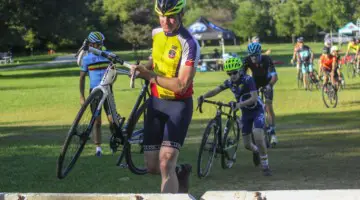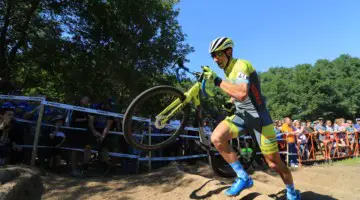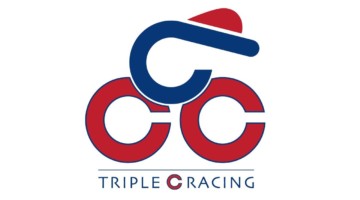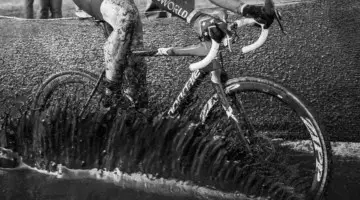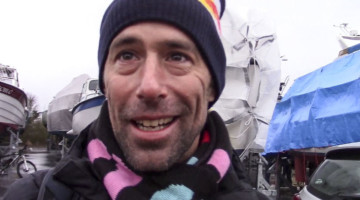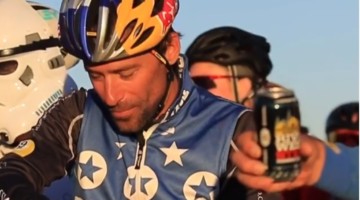TJ: I wouldn’t say they’re out of the picture. Jeremy [Powers’] group will still be a major factor since his sponsors will be pretty consistent with the exception of a few personal changes, and he will keep a presence on the course. Our team is going to look the same going into next season. We will still have Kaitlin Antonneau, Ryan Trebon, and Curtis White, who’s now 19.
CXM: Looking back at the end of last year, do you have any major goals for the upcoming season?
TJ: I’m really trying to look towards Nationals and repeating the success I have had there. There are always a few good races to prepare for, like Providence, throughout the season.
CXM: You have once said that you prefer the title “Tim Johnson, rider,” to “Tim Johnson, racer.” Is there any time before cyclocross season when you see a deliberate shift away from riding and focus on formal training?
TJ: March and April are the times I get out to ride. By the time May and June comes along, the training leading into the season becomes more structured.
CXM: You spent the last season racing domestically. Do you have any plans to race in Europe for the 2014-5 season?
TJ: We will definitely stop by the Milton Keynes World Cup in the United Kingdom, and of course, the World Championships in Tabor will be a goal.
CXM: Why do you spend so much time state-side?
TJ: Well, it comes down to this: the United States is already a massive country that requires long travel times. This time in the air is compounded when you put Europe into the equation. I already spend my Fridays and Mondays traveling, and I don’t care who you are, pushing yourself further from one side of the world to the next will wear you down.
Secondly, if all the Elite Men just decided to hop over there, we wouldn’t have the ability to help in the growth of American Cyclocross. And let’s face it, Americans could spend our season racing on their courses, but in the end, the Europeans don’t really care if we are there or not. You travel over there and race against guys who have been riding on the same courses over ten times in their careers, and it becomes difficult to compete. Sure, you can race successfully in Europe, but there are other factors to think about.
CXM: You have spent a lot of the time during this clinic discussing the need to develop technical skills. Do you think you are a more technically savvy rider than you were 15 years ago?
TJ: Nope.
CXM: NO?
TJ: [laughs] You know, 15 years ago I was willing to take much more risks. At this point, I understand the full consequences of those risks. I have always considered my technical skills to be one of my strengths in cyclocross, and I am more smooth than I was before, but my risk taking is no longer at those same levels.
CXM: Can you walk us through your nutrition on race day?
TJ: Early in the morning, I wake up and have some oatmeal. We like to get to the course around 10, do all the necessary setup and make sure we have some early time for media and interviews. Afterwards we keep up the nutrition and hydration. I eat rice and eggs hours before the race starts. Usually, I like to drink enough Hyper Hydration to feel almost a little bloated by the time I move over to the start line. That way, by the time the race is done, my body is still way more hydrated than that other guy who hasn’t been keeping up on the intake. Usually, 10 minutes before the race, I’ll take a Red Bull or a couple gels to make sure to keep the blood sugar levels ready for racing.
CXM: What do you think of stepping-thru during dismounting?
TJ: Well, it’s not something I’m going to demonstrate for the clinic. A lot of riders coming to the sport are moving away from that method. It’s one of those things that you can learn on your own time later on just to have in your skill set, and I can understand that, but stepping-thru shouldn’t be the fundamental technique.
CXM: Thank you for taking the time to talk with Cyclocross Magazine!
TJ: Thank you.
For a followup on “Cracking the Code” and more off-season excitement, stay tuned to cxmagazine.com!























